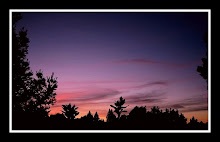Before unraveling the mysteries of ISO, I want to take a step back and explain what is an image sensor. Before digital cameras were popular, the exposure of light emulsified traditional film to produce an image. The film would then be processed to produce image. The technology of electronic image sensors replace film cameras. Image sensor's function is the same as the traditional film rolls, to gather and produce the image data. Common image sensors in the market today are CCD (Charge-Coupled Devices) and CMOS (Complementary Metal-Oxide Semiconductor). You don't have to remember this to take photos like Ansel Adam's although I thought it is imperative to mention what it stands for especially for those of you that might turn out to be a world reknown photographer in the future and if some geek uses these terms like me, it certainly won't sound foreign to you.
The CMOS sensors are the thing of today and gaining popularity rapidly because of its conventional manufacturing process that makes its production cost effective to many manufacturers.
You are probably wondering what has all this got to do with ISO? You probably ask yourself this since I have not mentioned anything about ISO sensitivity yet. See, bad judgment on your part to pick reading this article over the chain letter you received from that wealthy Nigerian that needed your help to transfer his money into your bank account.
Sorry about my short attention span today. Where were we?? I will try to stay focus. ISO has everything to do with image sensors. They are like Pele and Football, French Fries and Coca-cola, Bread and Butter....... you get the idea..?
ISO is a measure of light sensitivity to the image sensor. The ISO numbers are such as 100, 200, 400, 800, 1600, 3200, etc. The larger the number, the more sensitive the image sensor is to light that is present. However, the larger the ISO, the image presents more "noise" to the image produced. For those of you who do not know what "noise" means in photography lingo, think about the photos you took that appeared grainy. The grainy photos are caused by image "noise". To keep it short and sweet, the higher the ISO, the higher the "noise" level ( more grain) in your photo.
The lower the ISO number, the slower the shutter speed or larger/wider aperture is needed. Remember aperture and shutter speed in my previous articles? Read them to understand what i am saying here. For those lazy readers out there, let me sum it up for you. The lower the ISO number, it requires more light to be transported to the image sensor to produce the image. So, when ISO is low, then lower shutter speed or larger/wider aperture allows more light into your lens to capture the shot! The ISO sensitivity increases 2 times the sensitivity of the image sensor results. A 200 ISO sensor is twice as sensitive as an ISO 100 sensor. The 400 ISO sensor would then be 4 times as sensitive as an ISO 100 sensor, and so on. Eureka!!....I hope...
In photography, there are several methods to promote more light to your image. They are as follows:-
1. Increase the sensitivity to your image sensor (ISO)
2. Increase the time which allows the image sensor to be exposed to light. (Shutter Speed)
3. Increase the opening of the camera lens (Aperture)
4. Let there be light!! (Flash)
5. Natural Light (Sun) and Unnatural Light (Neon, Fluorescent, etc)
One point I would like to make before I conclude. In digital photography, it is a challenge to reduce image noise when the ISO is higher. However, when your ISO is set at 400 or lesser, it will be difficult to observe image "noise". It should not bother you if you take photos and just store them in your computer for fun. It should however bother you if you plan to blow up your photos into larger prints and hang in on your living room wall. Grainy photos of a beautiful sunset hanging on your living room wall might not really be appealing although there are exceptions to that rule. ;)
Have fun with your camera and hope I was able to answer more questions than raise more doubts by this tutorial. Either way, I am more than happy to enlighten you with my humble knowledge if you still need more insight on ISO sensitivity. Happy clicking!!



